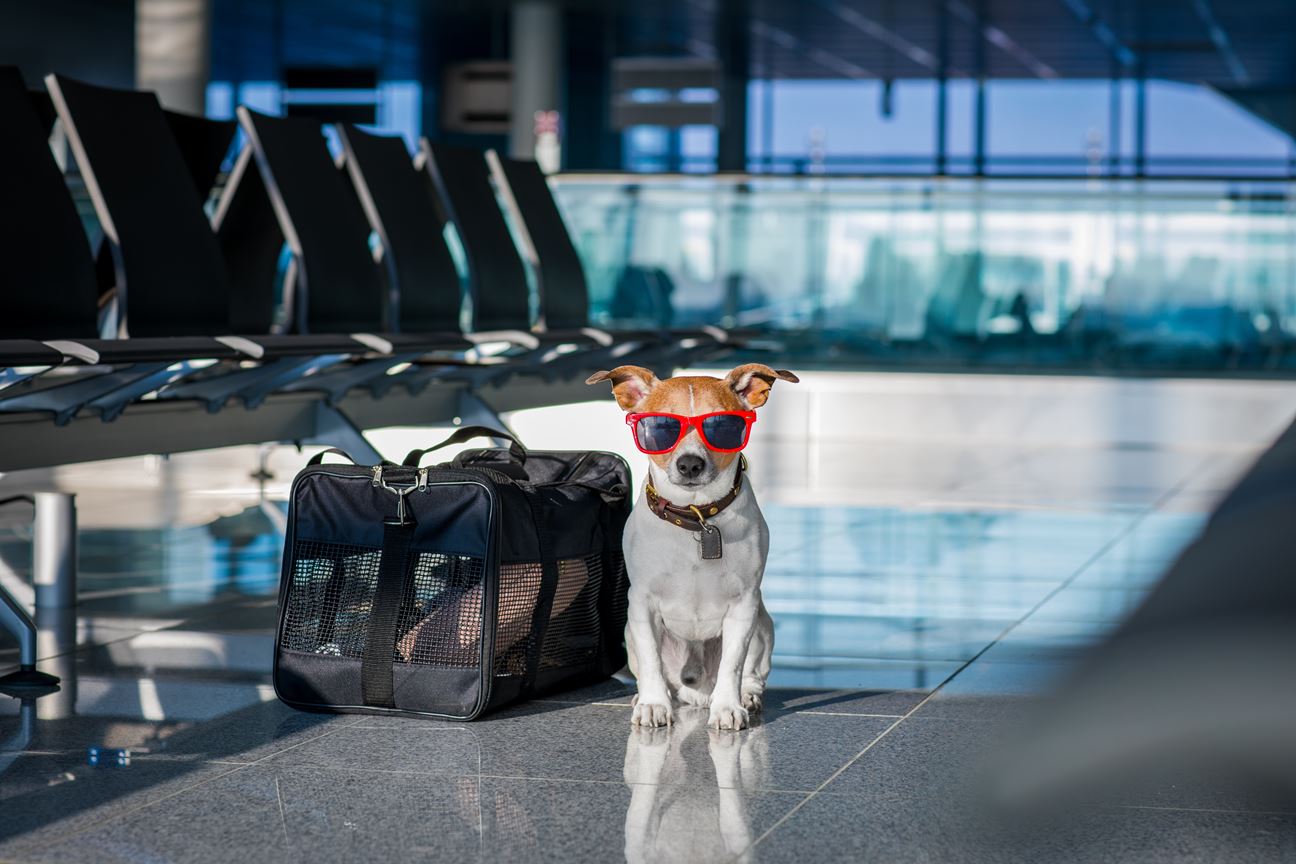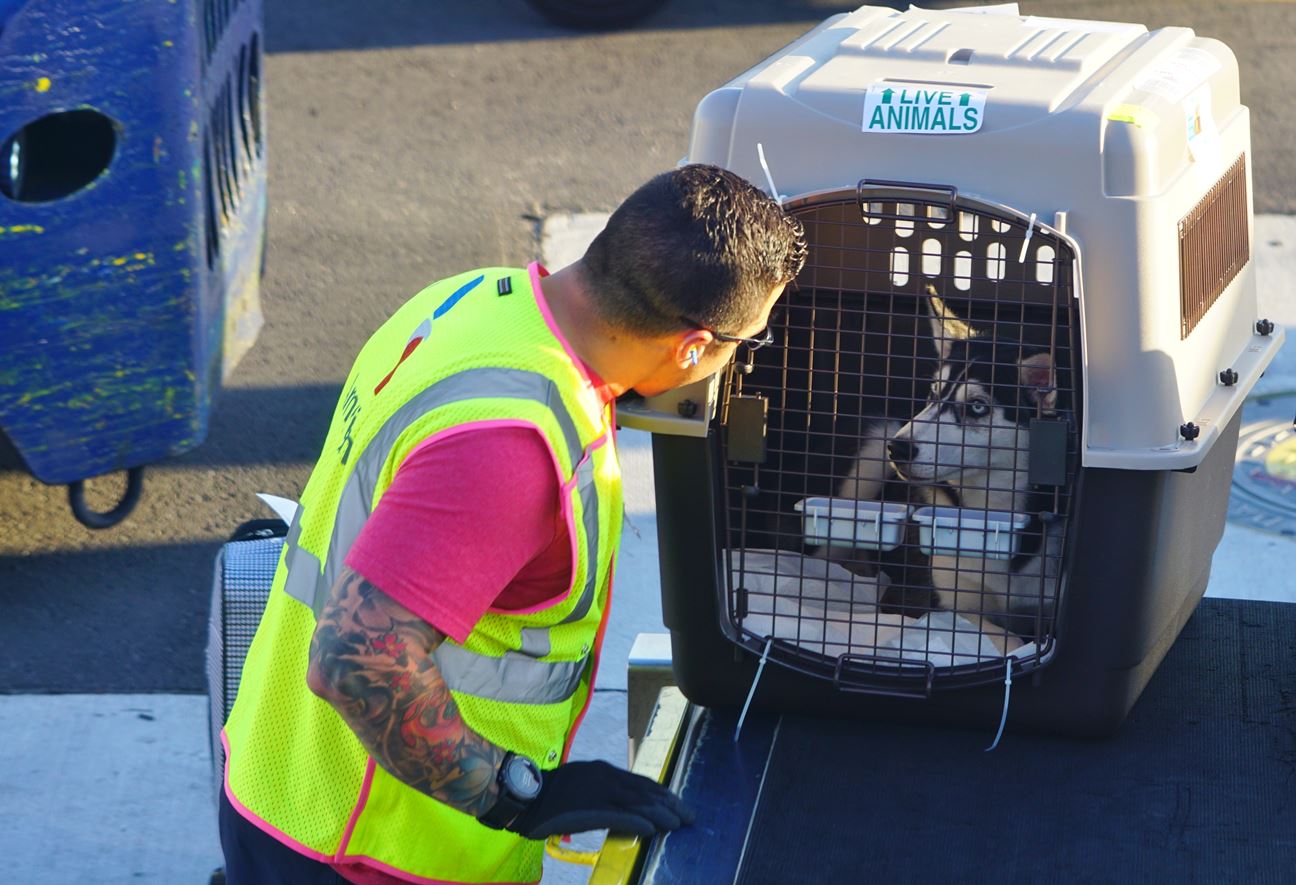To make sure your pet has an enjoyable and stress-free travel experience, here’s what you should avoid doing.
Transportation, especially flying, has proven to be stressful for many pets. While all those pets boarding flights, as seen on various social media, seem cute, the reality is far different. The idea of travelling with your pet sounds really fun, but a fair warning to pet owners flying their pets: this idea can be really stressful, and sometimes downright dangerous. In several cases, when the pet parent (s) relocate, they want to take their pets along, and rightly so. And so they choose to fly. While flying does reduce the amount of time your pet will spend being confined and stressed, things may not always go according to plan.
 One must approach your pets' travel with positivity and calmness. Photo by Javier Brosch on shutterstock
One must approach your pets' travel with positivity and calmness. Photo by Javier Brosch on shutterstock
Weighing in the Pros and Cons of Flying
First, you must understand how pets travel on an aeroplane and decide if it is absolutely necessary to bring your pet on a plane. Right off the bat, unless making a permanent move, avoid taking pets on a plane ride. See if other options work out - say taking a road or rail journey. That way you can avoid subjecting them to situations like loud noises, changes in cabin temperature and air pressure, and being all alone confined in a box. But let’s say you have no other option but to fly, then? Among many questions that may arise, you may think: is it safe? For starters, yes, it is and it can be done. But you must research ahead of time.
Read our checklist of top mistakes to avoid when flying with a pet
#1: Not Getting a Go-Ahead From the Vet
Before you make any travel plans, make sure your pet is cleared to travel by a veterinarian. Be forthcoming about any health issues with the vet, and if the vet advises against flying with your pet, follow their advice. But in most cases, your pet should be cleared to fly. The vet will also ensure that your pet is up-to-date with all vaccines and preventatives. Next, talk to the vet about your pet’s food, water, and medication. Even today, experts stay divided on using sedatives to alleviate stress during air transport. Your vet will assess the health risks involved with sedation, and may in some cases advise sedation. Unless strongly recommended, DO NOT give your pets sedatives.
#2: Not Buying an IATA-Compliant Pet Crate
That brings us to a very important point. The International Air Transport Association (IATA) has laid out many global standards which most airlines abide by. One of them is your and your pets’ safety during air travel. Pets flying aboard an aircraft will need to strictly travel in a carrier or a crate. And depending on the airline policies, you will have to buy one with exact dimensions and specifications. The crate must be durable with strong handles, have plenty of ventilation, have space to keep enough food and have a leak-proof bottom. Moreover, it should have all of your contact information, and most importantly, be labelled in bold, mentioning the words “Live Animal” with an arrow indicating which side needs to be kept up at all times.

A baggage handler from American Airlines loading a dog onto the plane. Photo by EQRoy on shutterstock
Once the crate is home, start the training. Your aim now must be to transform this crate into your pets' new favourite place to be. Place his blankets and toys inside the crate. Then start hiding yummy treats so that your pet starts thinking the crate is worthy of his visit. Starting from 5 minutes, gradually increase the time your pet spends inside the crate. By the time your departure date arrives, your pet must start associating this crate with his comfort zone.
#3: Not Choosing the Right Flight
If possible, you should book a direct flight to your destination. The shorter the flight, the easier it will be for you and your pet. Pick your flight carefully as your pets’ experience depends on it. Another effortless way to help your pet is by booking a late night or an early morning flight. That way, there would be less crowd at the airport. Next, do not fly in extreme weather. Too hot and too cold is bad. Earmark your flights accordingly.
#4: Flying the Pet in a Cargo Hold
This one is tricky. And as a pet parent, your best-case scenario would be your pet travelling with you in the cabin. Before booking a flight, check all the airlines and their ‘flying with the pets’ policies. Alas, as an absolute last option, your pet (especially the larger dogs) will have to travel in the cargo hold. This means your pet will stay away from you for the duration, including pre-flight, mid-flight, and post-flight, and that can be very traumatic for your pet. Although thousands of pets are transported via cargo safely every year, some horror stories coming out of an aeroplane’s cargo hold are quite dire. There have been instances of pets disappearing from broken crates, suffering injuries due to impact, suffering heat strokes — all causing tremendous stress for the pets. Some airlines have put certain dog breeds on the no-fly list. This includes the Brachycephalic (or the snub-nosed) dogs. There have been many cases where their short noses have caused them trouble breathing, especially with all the changes in air pressure levels.
#5: Not Checking the Airline’s Pet Policy
Go through the airline’s policies before finalising your trip. You would be surprised to know that some airlines do not take any pets on board. But many others do. If you are lucky, you may find yourself a rather pet-friendly airline. Be in touch with the airline representatives, especially on days just before your trip. You can also engage your local pet travel agency to ensure that your pet gets the best service and treatment.
#6: Not Checking Pet Import Laws When Travelling Internationally
Regardless of whether you are moving or just visiting another country, it is important that you understand and abide by the terms required by the said country for bringing in the pets. Some countries may impose stricter laws than others. This can include not allowing certain types of animals or certain types of breeds. One must also check the general guidelines regarding what vaccines may be required. Some countries may also insist on pets being micro-chipped.
A few simple steps ahead of time will ensure a safe and happy trip for you and your pet. Needless to say, the process of flying with pets can sometimes feel convoluted. In that case, be ready to scramble to make other plans.